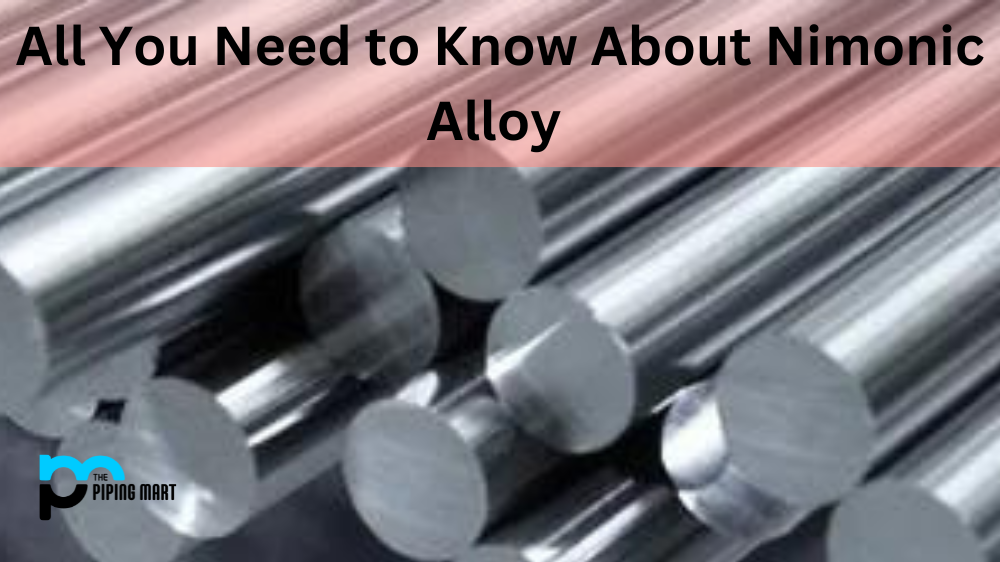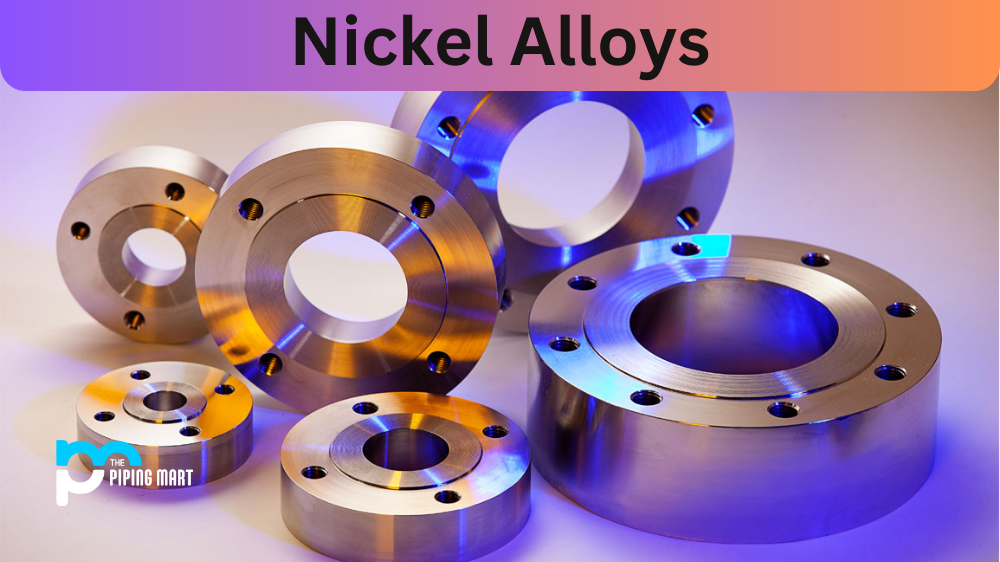Nimonic alloy is a nickel-chromium-based superalloy with a high strength-to-weight ratio. It can withstand extreme temperatures and harsh environments, making it an ideal material for aerospace and defense applications. In this article, we will explore the composition, chemical properties, mechanical properties, physical properties, and uses of nimonic alloy.
Nimonic Composition
The most common compositions of nimonic alloy are made up of 80% nickel, 20% chromium, and small amounts of titanium and aluminum. Other elements such as carbon, sulfur, manganese, silicon, and phosphorus may also be present in trace amounts. These alloys are designed to provide strength and corrosion resistance at elevated temperatures. Nimonic alloys are also known for their excellent weldability.
Nimonic Chemical Properties
Nimonic alloy has excellent oxidation resistance due to its chromium content; it can resist oxidation up to 980°C (1790°F). It is also resistant to sulfidation up to 580°C (1076°F). The alloy is not very resistant to chloride stress corrosion cracking due to the presence of nickel in its composition. However, it can resist stress corrosion cracking when exposed to non-oxidizing acids such as nitric or hydrochloric acid.
Nimonic Mechanical Properties
The mechanical properties of nimonic depend on its composition; however, they are generally characterized by good strength at elevated temperatures up to 1150°C (2102°F), low creep rates below 700 °C (1292 °F), good ductility in the annealed condition, and good fatigue resistance at ambient temperature. Its yield strength ranges from 400 MPa (58 ksi) for 80A alloy up to 1000 MPa (145 ksi) for N155M alloy. Its thermal conductivity is about 2/3 that of austenitic stainless steel.
Nimonic Physical Properties
Nimonic alloys have a density of 8.2 g/cm3 (0.296 lb/in3), a melting point range of 1230–1320 °C (2250–2400 °F), and a coefficient of thermal expansion between 12–16 μm/m ⁰C (6-8 x 10 -6 in /in oF). The thermal conductivity decreases with increasing temperature, while the electrical resistivity increases with increasing temperature. The modulus of elasticity ranges from 200 GPa (29 x 10 6 psi ) for 80A up to 210 GPa (30 x 10 6 psi ) for N155M.
Nimonic Alloy Uses
Nimonic alloys are used extensively in aerospace applications because they possess excellent high-temperature strength and good corrosion resistance. They are used for turbine blades, combustion chambers, afterburners, exhaust systems, airframe components, fasteners, springs, and other parts that need good strength at elevated temperatures. They can also be used in chemical processes like flue gas desulfurization systems, where their corrosion resistance comes into play. Additionally, they can be used in nuclear engineering applications due to their high neutron absorption cross-section, which makes them suitable materials for control rods or other parts exposed directly to radiation fields.
Nimonic material
Nimonic material is a nickel-based alloy that is incredibly strong yet lightweight. With a temperature resistance of up to 980 degrees Celsius, this material has become increasingly popular for a range of aerospace applications, including jet engines and airframes. Its low thermal expansion capability is also useful for parts requiring precise tolerances, such as turbine blades and conduit systems. In addition to its high tolerance capacity, nimonic fasteners also has excellent stress rupture and galling behavior, meaning it can withstand heavy strain with significantly reduced wear over time. Nimonic material is revolutionizing the aviation industry, allowing for greater efficiency and improved safety in modern aircraft designs.
Conclusion
In summary, nimonic alloy is a nickel-chromium-based superalloy that provides excellent strength at elevated temperatures and good corrosion resistance. It has many uses in aerospace applications, chemical processes, and nuclear engineering due to its unique physical properties. If you’re looking for a strong material that can withstand extreme temperatures or harsh environments, then nimonic might just be the right choice for you!

Pipingmart is a B2B portal that specializes in metal, industrial and piping items. Additionally, we share the latest information and information about materials, products and various types of grades to assist businesses that are involved in this business.




